Today I finished binding the last of the 23 notebooks I’ve been printing, folding, perforating and binding all month; while making the penultimate notebook I stopped to take photos of each step of the process, both as a guide to my future self and as a guide to others who might like to follow my lead.
Design
My decision to use standard letter-sized paper for the notebooks played a part in dictating their size: I decided to take each 8½ by 11 inch piece of paper and to first cut it into two 8½ by 4 inch strips, each of which got folded, with the help of a bone folder, into a 4¼ by 4 inch signature.
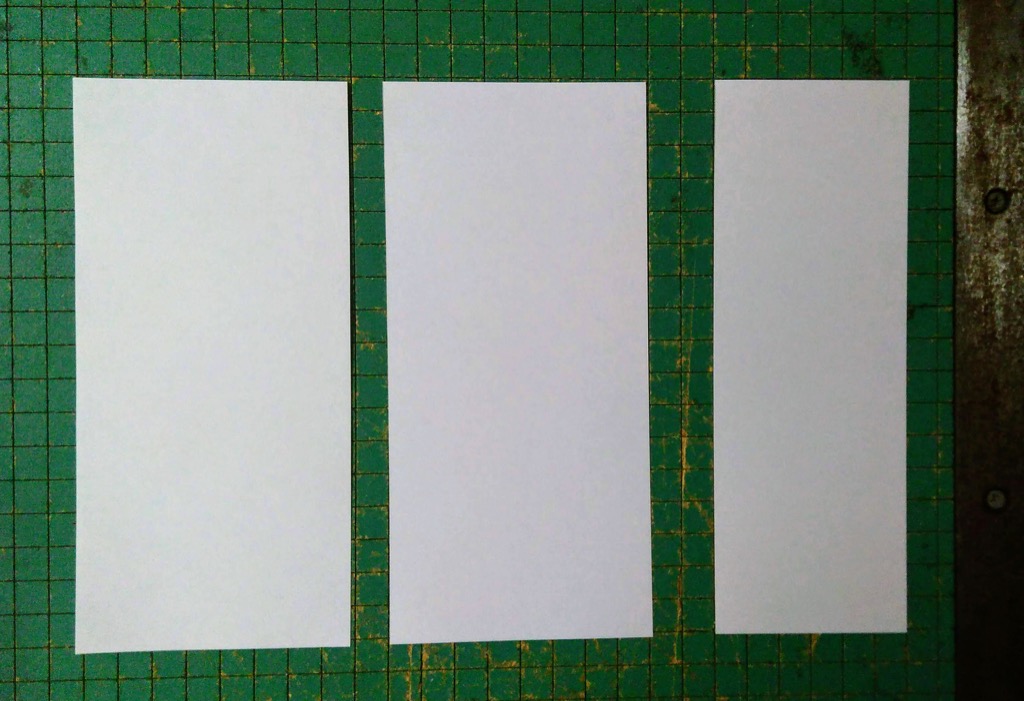
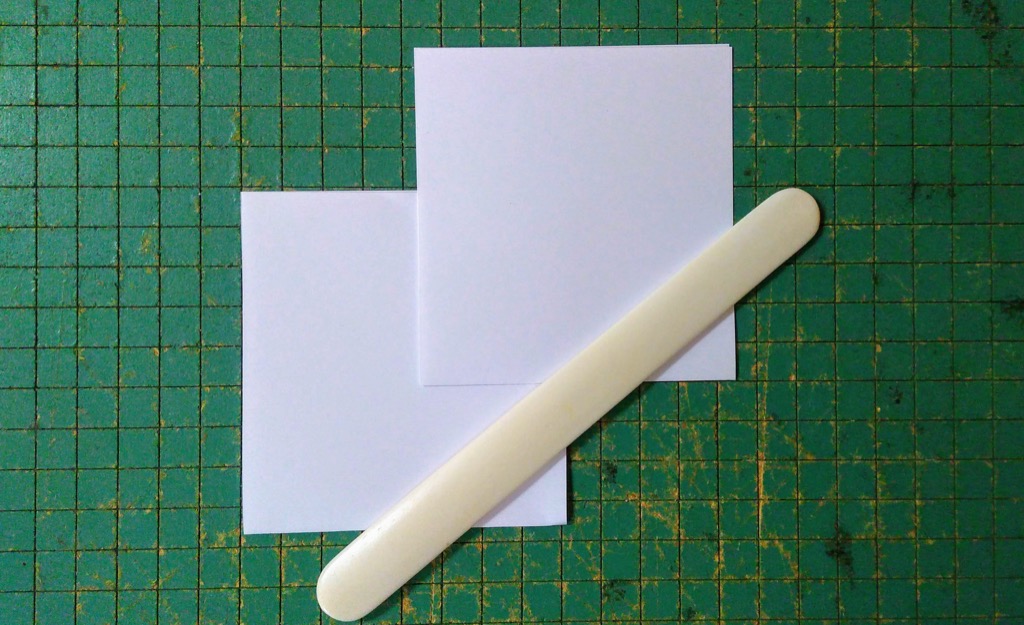
This left me needing front and back covers of the same 4¼ by 4 size; I cut these out of unbleached letter-sized card stock.
Printing the Covers
I decided that “Perforated Notes” would appear on the cover, as that’s what was going to be in the tin, so to speak; I also decided to add a credit to the front cover, which is something I seldom remember to do. As I related here in more detail, I set the Perforated Notes in 36 point Tourist Gothic and the credit line in 18 point Gill Sans:
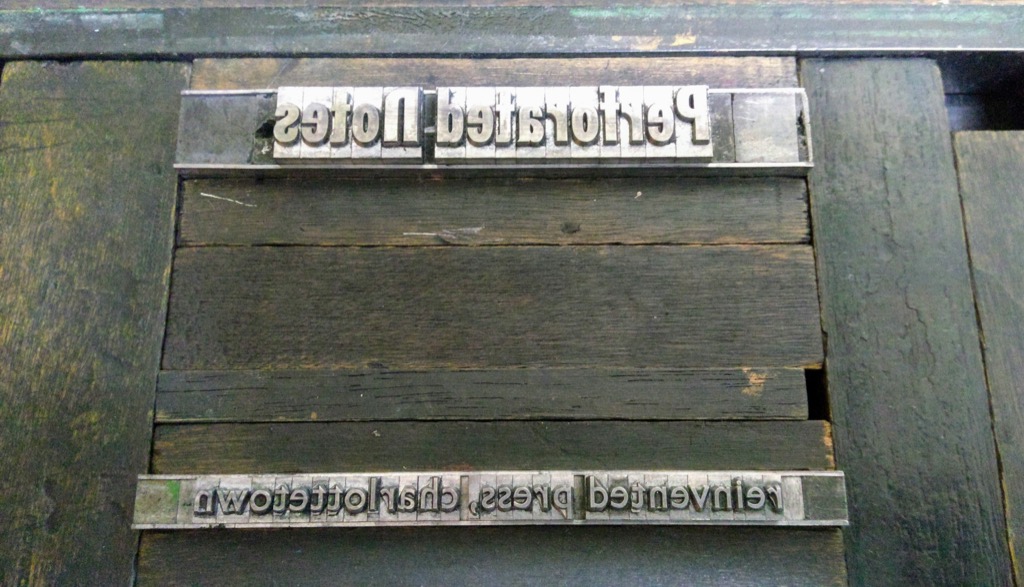
After setting the type and going through the laborious make-ready process to make-it-so, I printed about 40 covers, a number balanced between having too many and having too few.
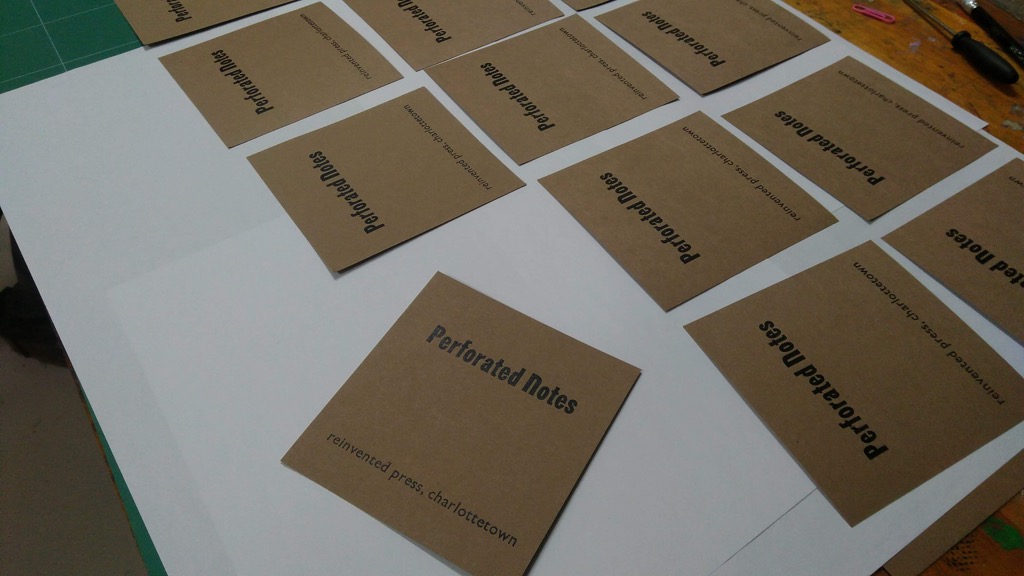
Perforating
To perforate the signatures that I’d cut and folded earlier, I locked a piece of “perf bar”–hardened steel with a perforated cutting edge running along one side–into the chase and into the press, and set a piece of hardened steel for it to land on the platen (so as to not damage the press).
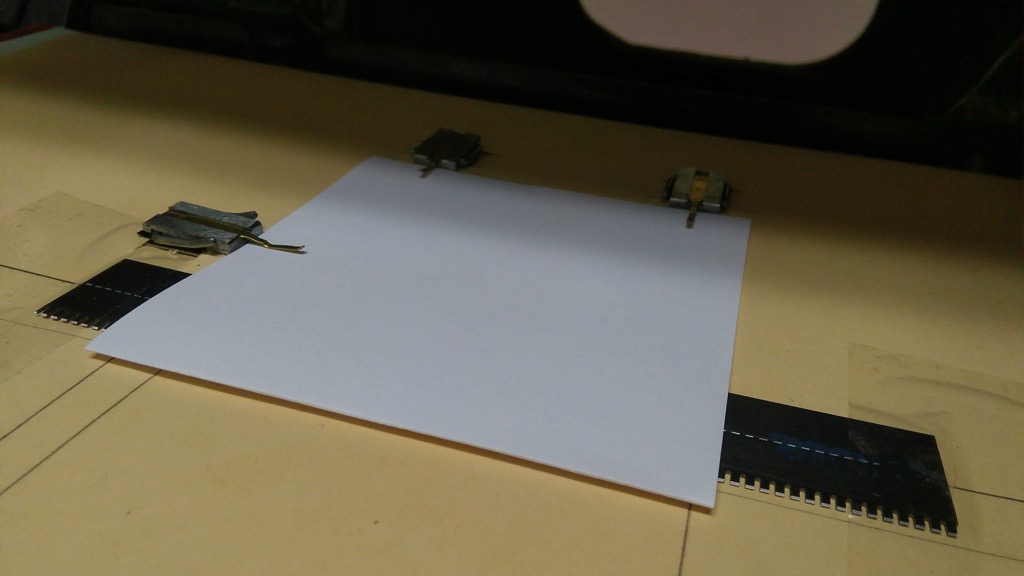
My initial attempts at perforating were frustrating because the paper would get caught in the perf bar on each run and I’d have to stop the press to remove it. I cured this problem by realizing that’s why all of the die-cut rigs that I inherited with the press have pieces of foam arranged around the cutters: the foam gets compressed on the cutting stroke, and then gently pushes on the perforated paper to release it; once I added this I made short work of the perforating.
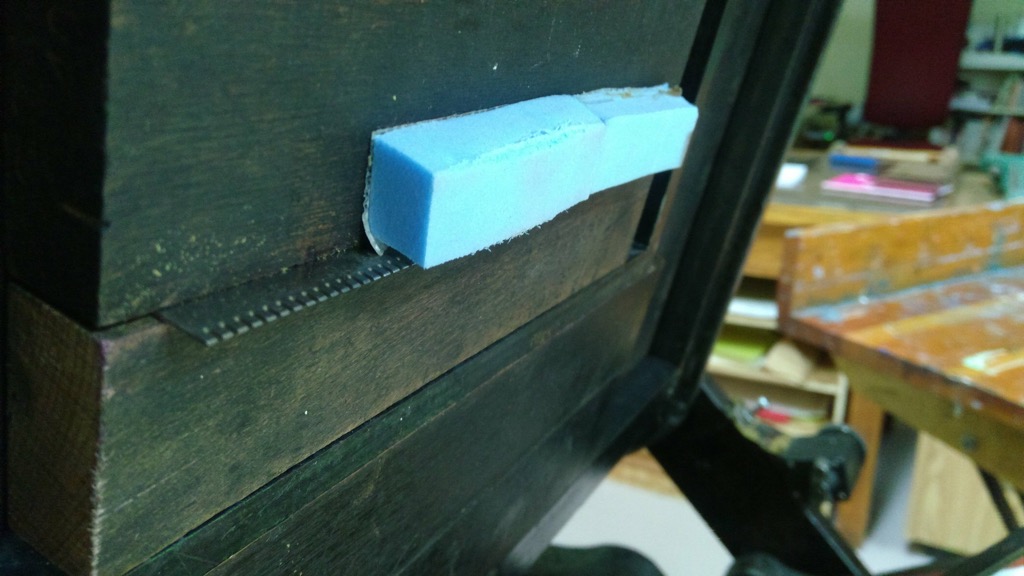
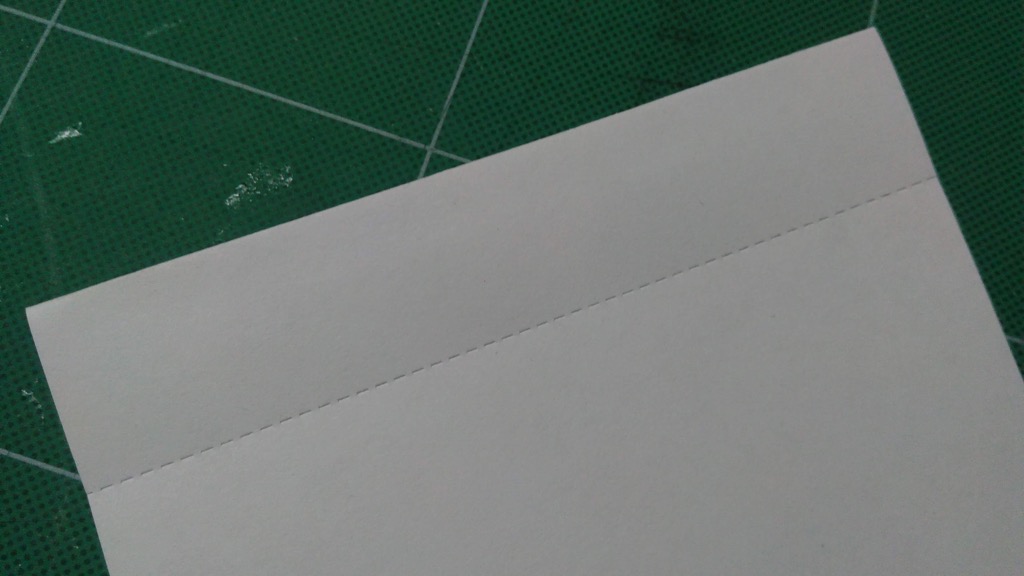
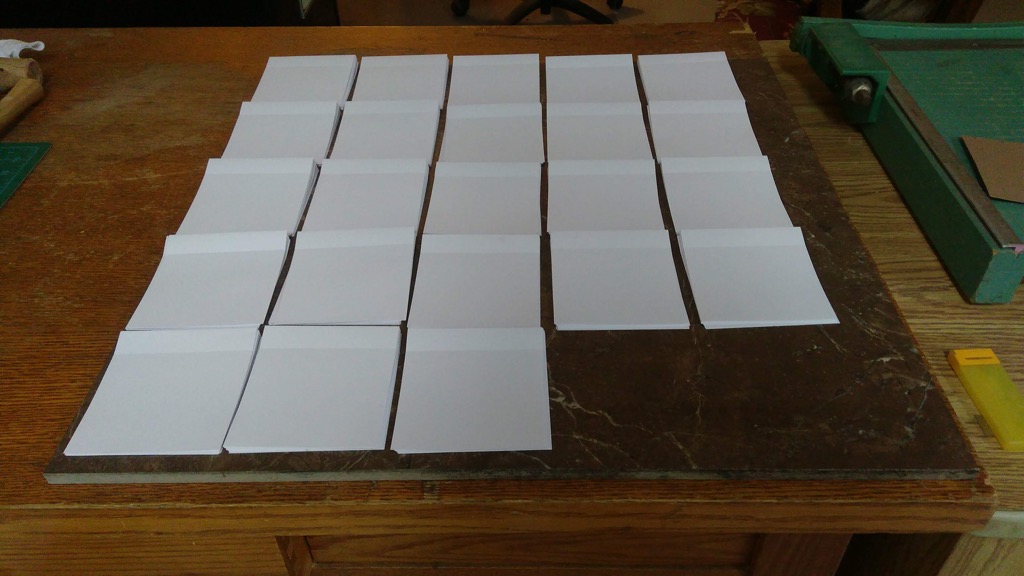
After some prototyping, I decided that each notebook would have 10 signatures, or 20 pages in total; once I assembled all the perforated signatures into piles of 10 I had enough to produce 23 notebooks.
Punching Holes
The raw materials for each notebook, before binding, looked like this:
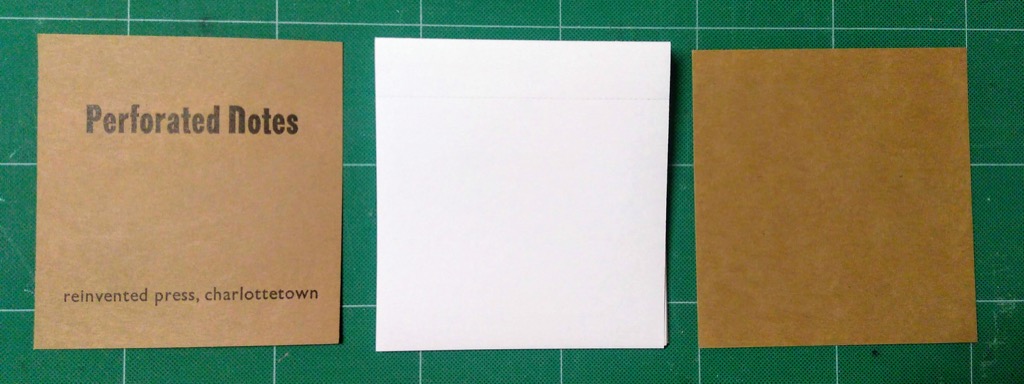
Each notebook had a printed front cover, 10 signatures of perforated insides, and a plain back cover.
The first step in binding was to gather these together in order, to align them with the top edge, and then to clamp the assembly together with a binder clamp wrapped around a piece of card (to avoid damaging the covers):
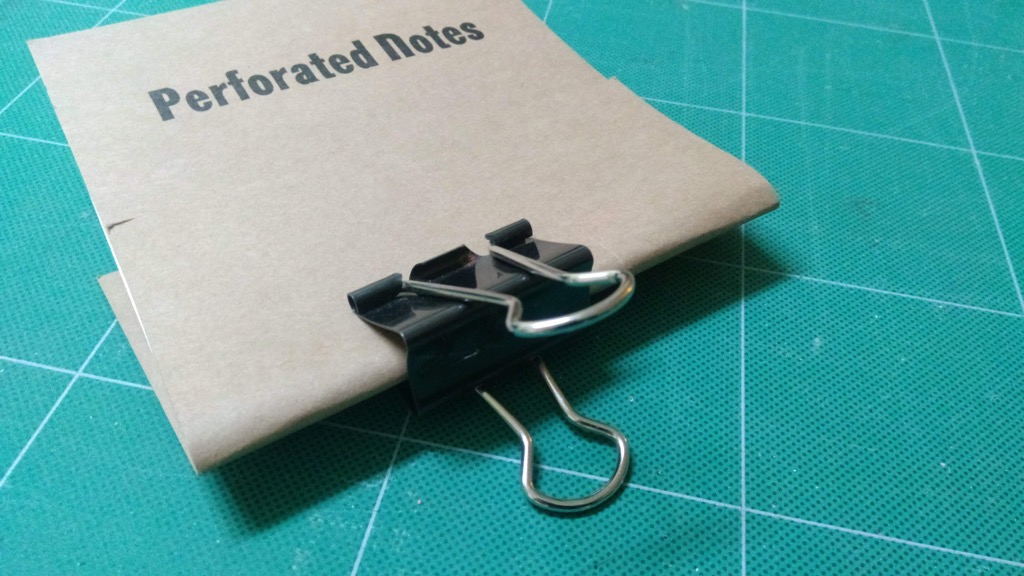
Next, I placed a template with five holes, over the notebook, aligned with the top edge, to act as a guide for punching holes:
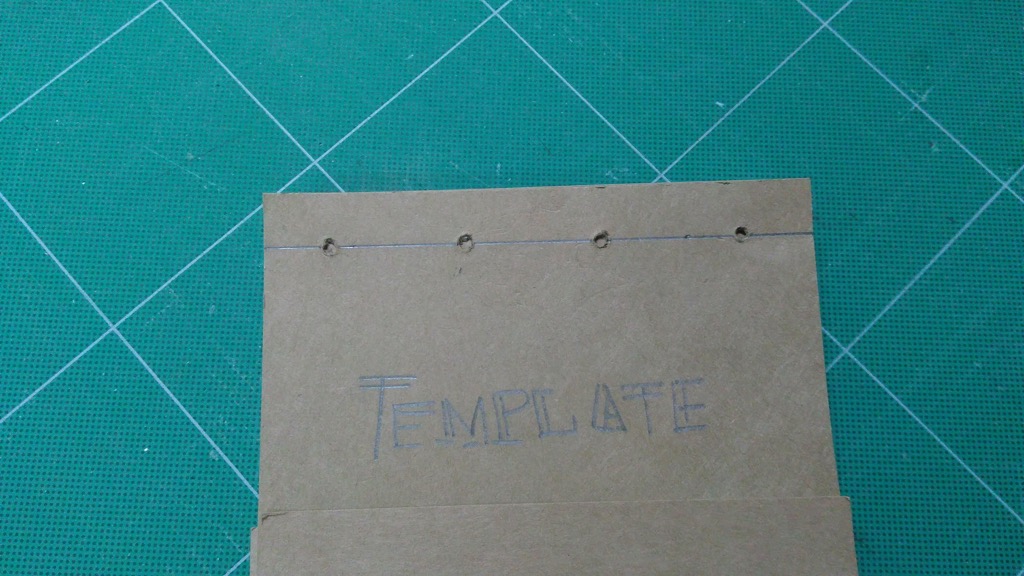
Using a template was a good idea: it’s fine to eyeball a single notebook, but to ensure consistency and levelness, the template was invaluable when binding multiples.
There are five holes in the template because an odd number of holes is required for the stab binding technique.
I used an awl, newly-arrived in the London Centre for Book Arts Bookbinding Toolkit, to punch the five holes; the limit of 10 signatures per notebook was, in part, informed by how much paper I could reasonably expect to punch through.
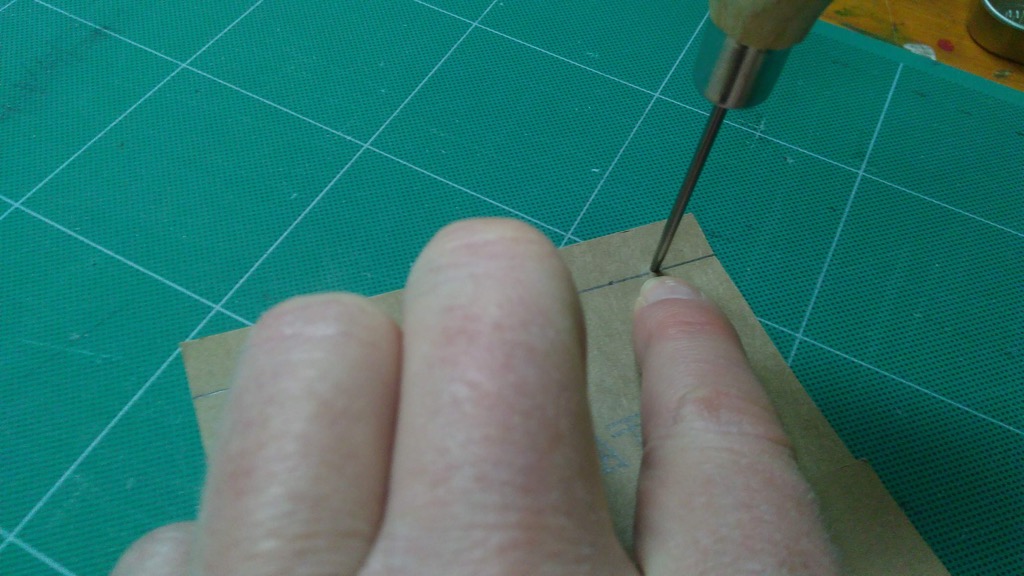
The notebooks with holes punched looked like this on the front:
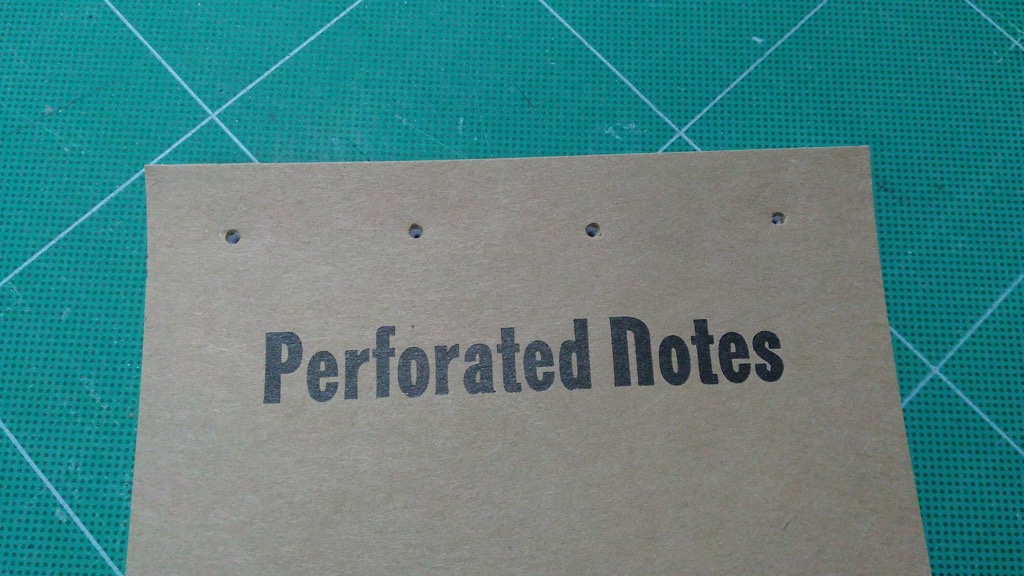
And like this on the back (just enough hole to be workable):
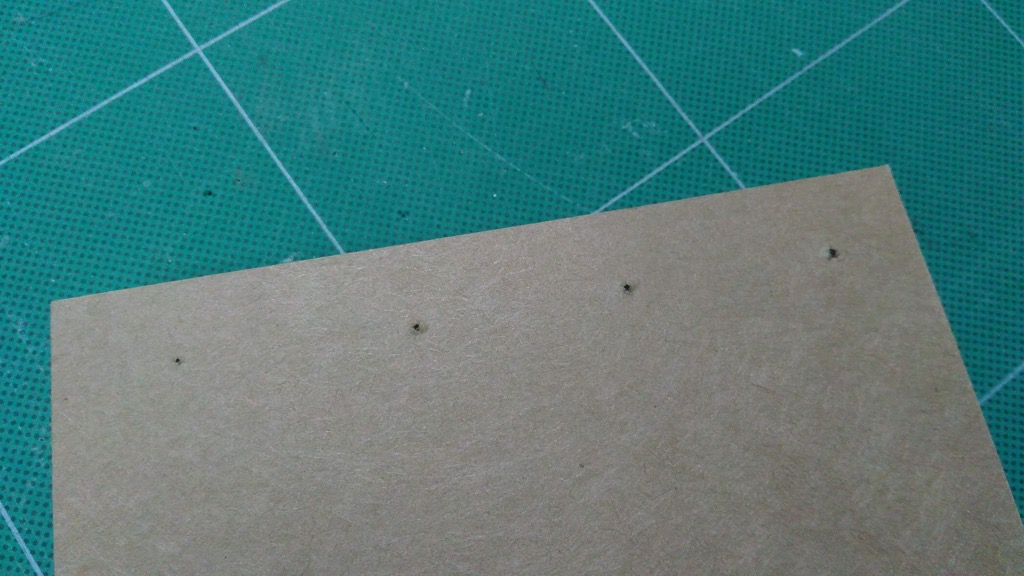
Sewing the Binding
I used a variety of thread and cord for the binding, experimenting to see what worked best. I was aided greatly by having my fibre-artist-girlfriend across the hall with her endless cache of options.
When I started sewing, each notebook was a struggle as I struggled to thread the bookbinding needle, with its very small hole; this process was aided greatly by purchase of a set of needle threading tools from the dollar store (3 for $1.50 in Crapaud):
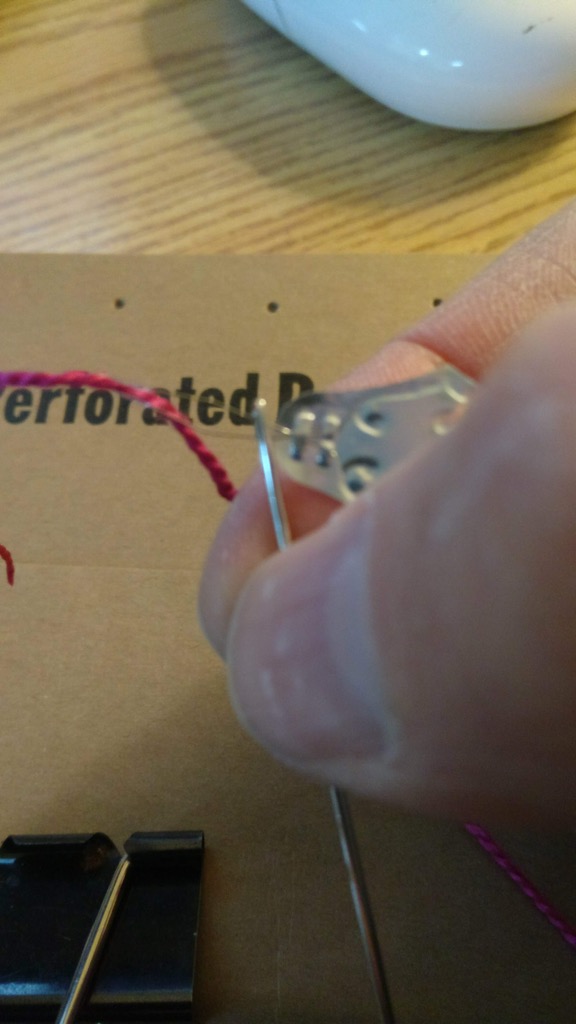
With the needle threaded, I ran off a length of about 24 inches of thread, and then tied a knot in the end:
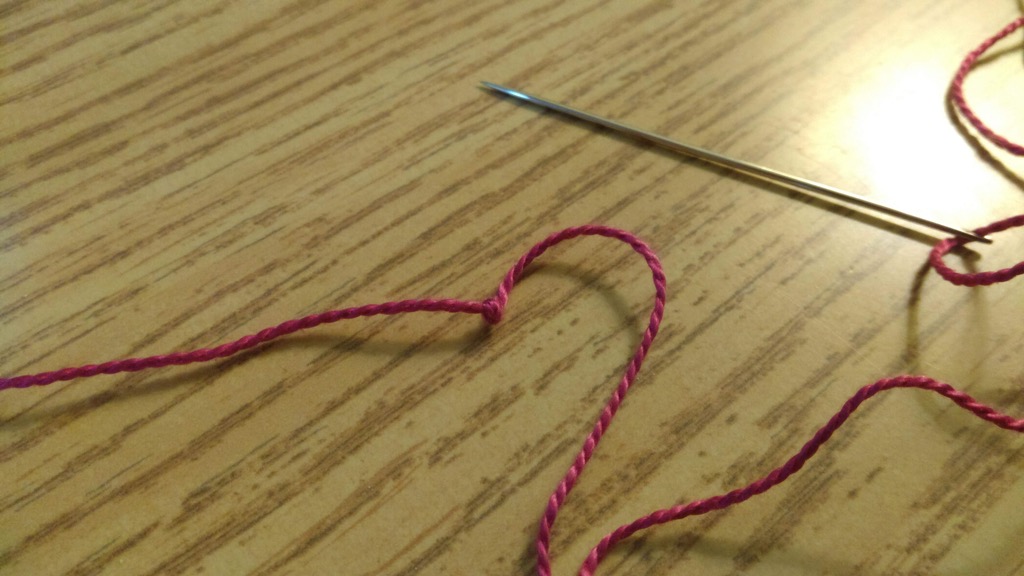
Stab binding starts with taking the needle through the inside from the middle out, using the first hole in from one side or the other, like this:
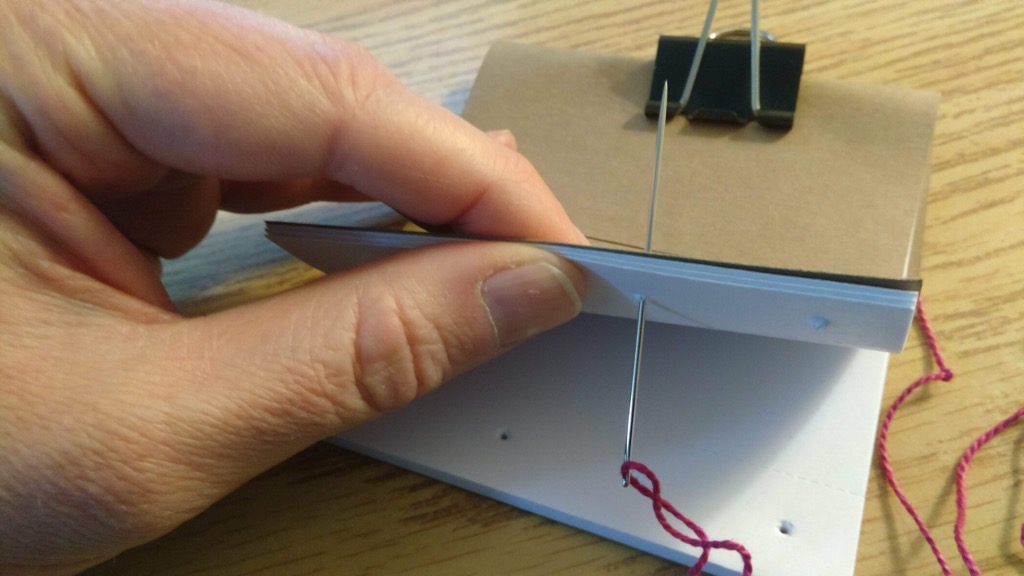
I pulled the thread taut to the knot, with the rat’s tail of thread left inside for use on the final step.
Once out through the top, I looped back around through the bottom and back through to the top, leaving this hole “bound”:
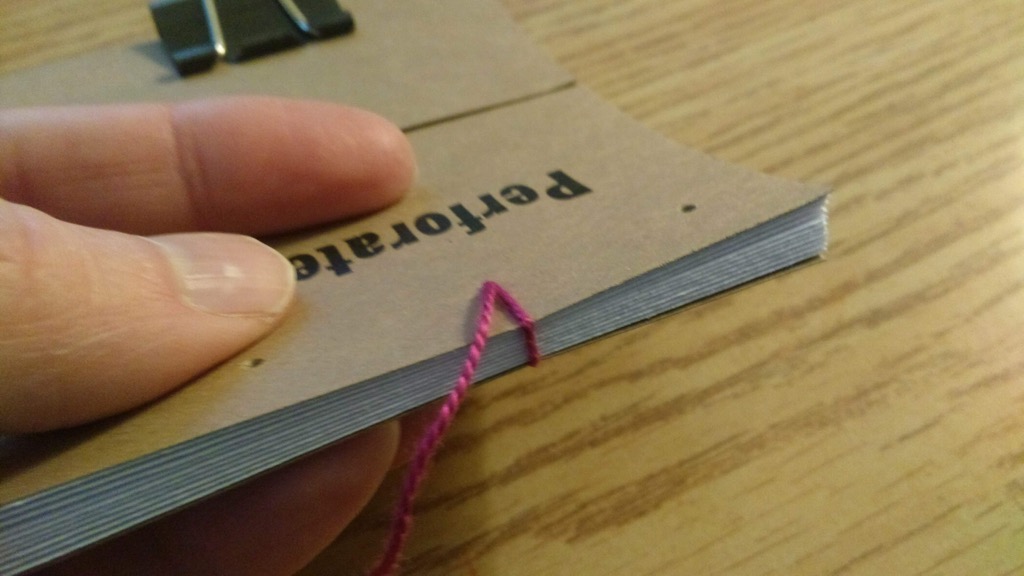
Once back out the top I moved along to the second hole, went down through the top, looping back around and back out the bottom:
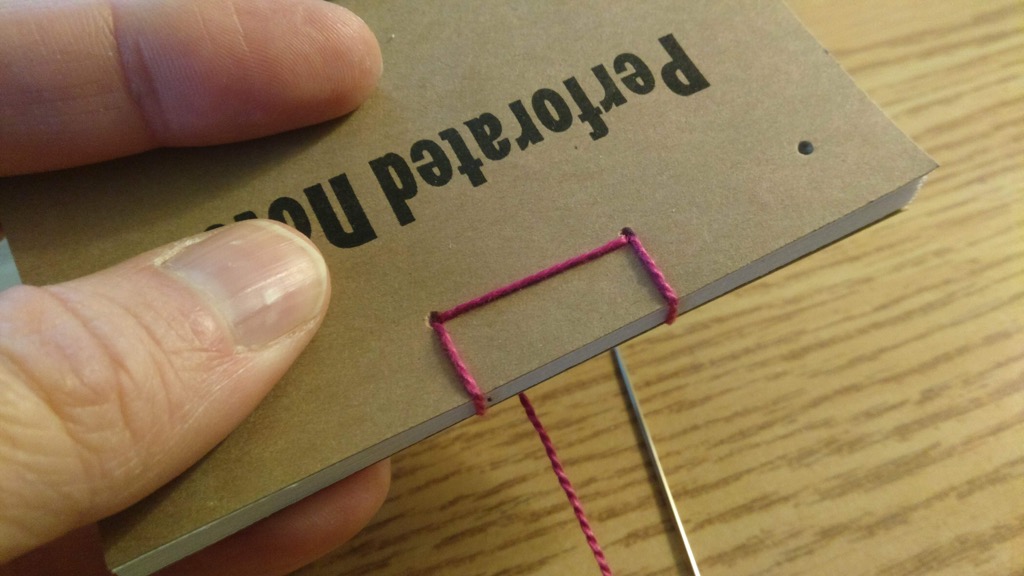
From there it was simply a process of continuing the same looping until the last hole, at which point I looped both around the end and then in the usual manner:
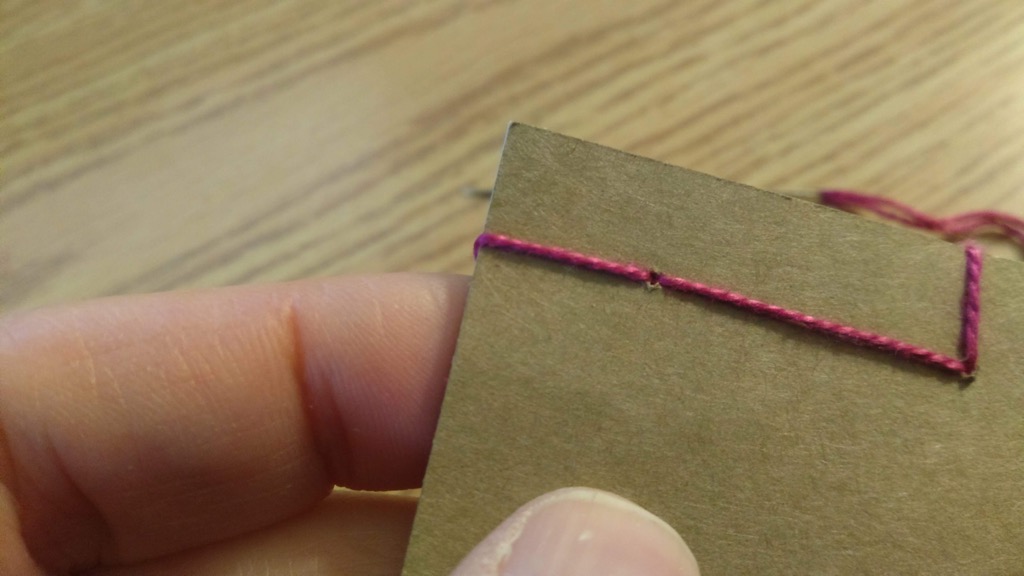
From there–and this is where it all began to seem kind of magical as everything fell into place–I repeated the same process back down to the opposite end:
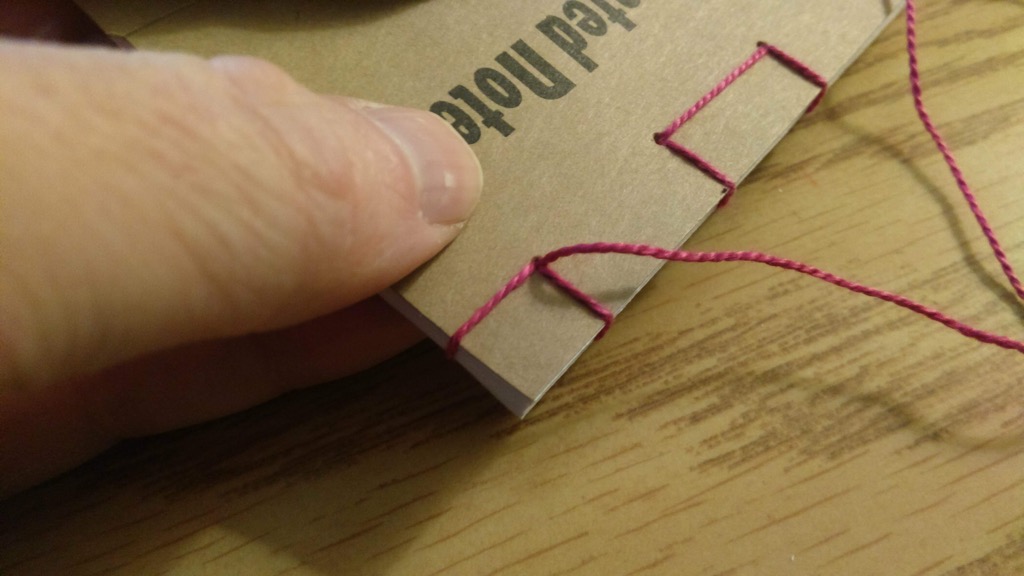
Once I got to the other end, stitched around the end and then the regular loop through the first hole, I stitched back through the middle to find the rat’s tail that I started with, cut the thread, and tied the two tails together in a knot:
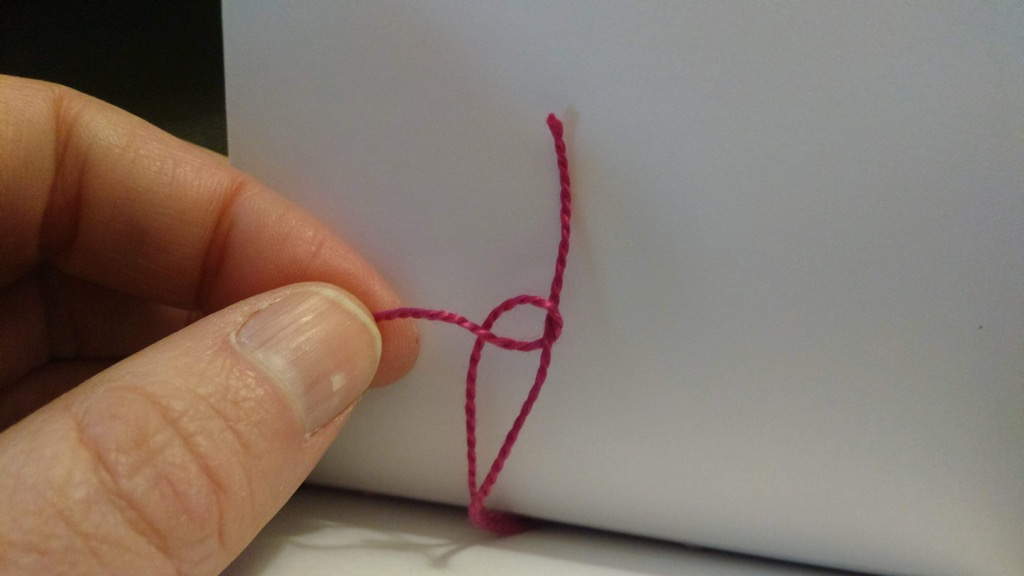
With the knot tied off, the binding was complete:
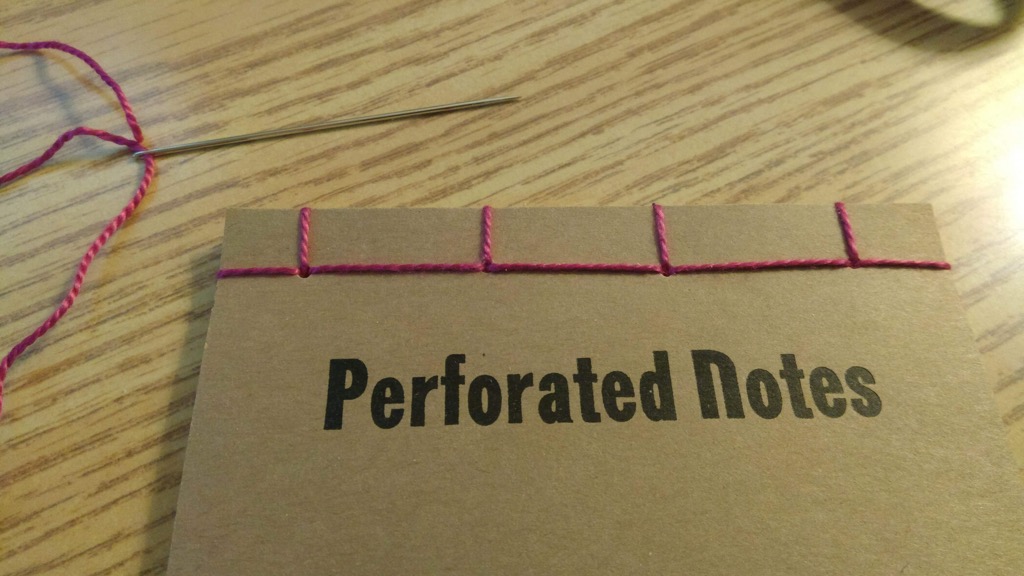
And from the back:
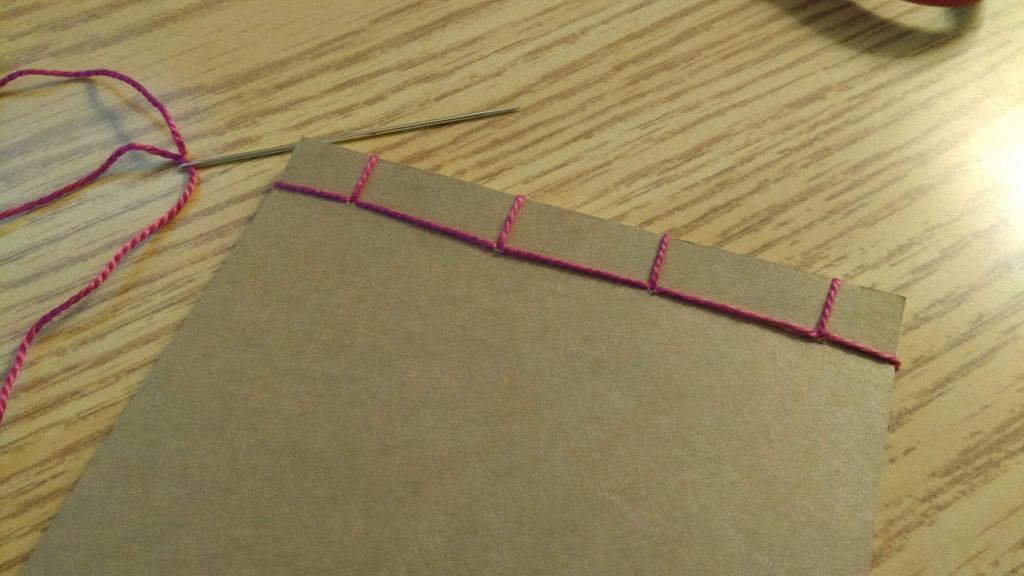
Trimming
Despite my best efforts, some of the notebooks ended up slightly ragged at the bottom end:
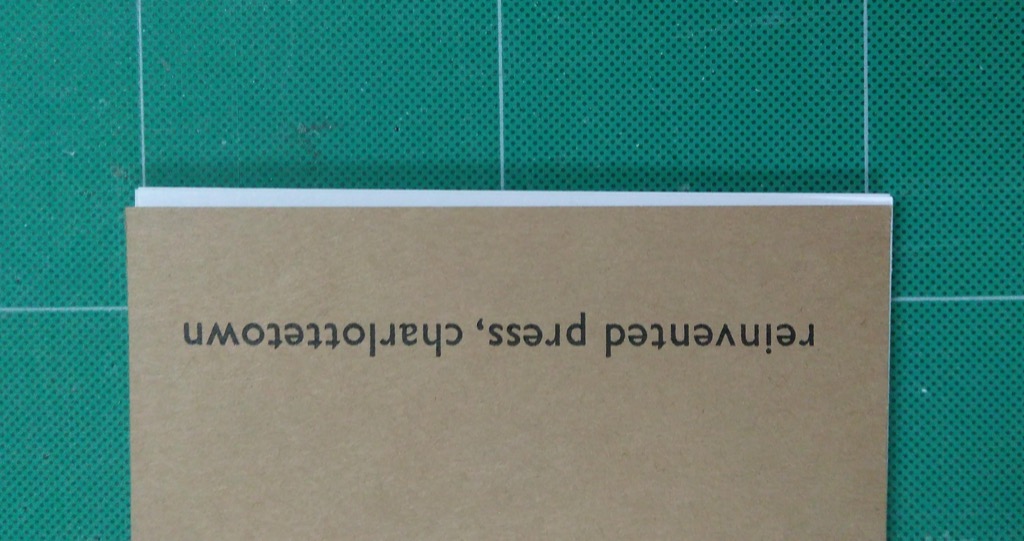
The solution to this was to hold a line rule along the bottom and then to gently trim the excess:
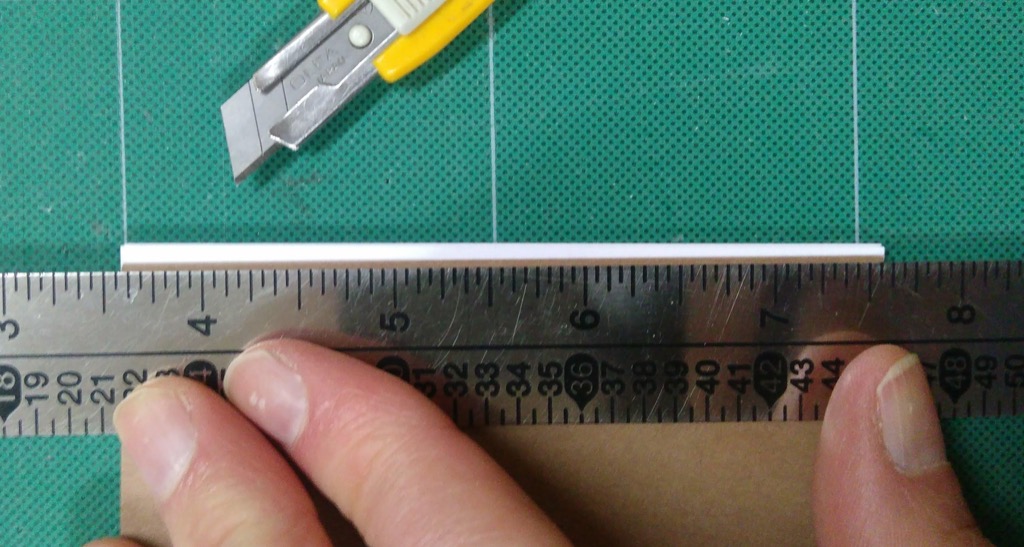
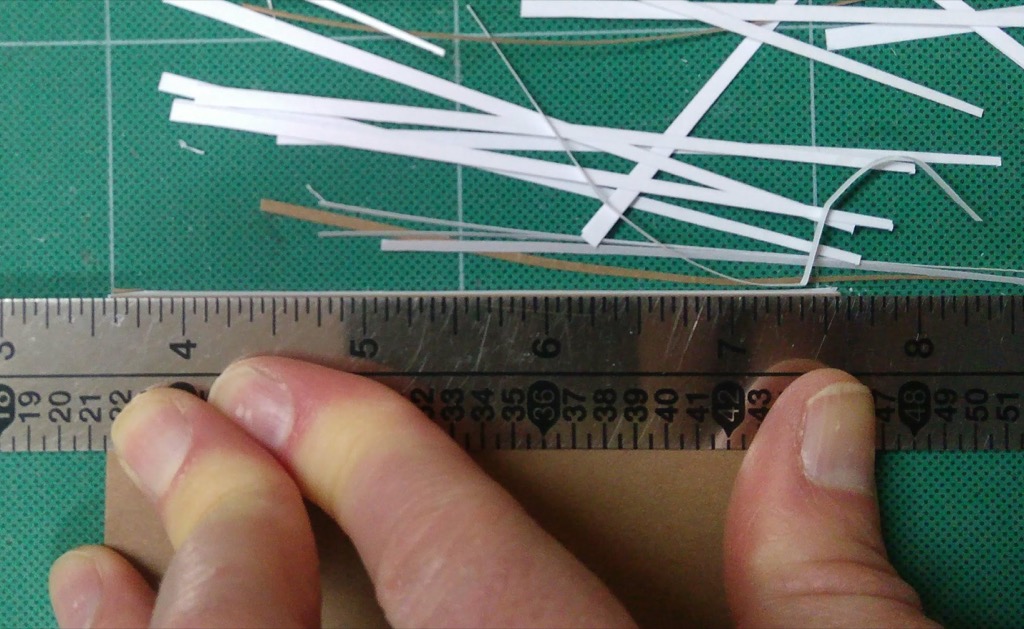
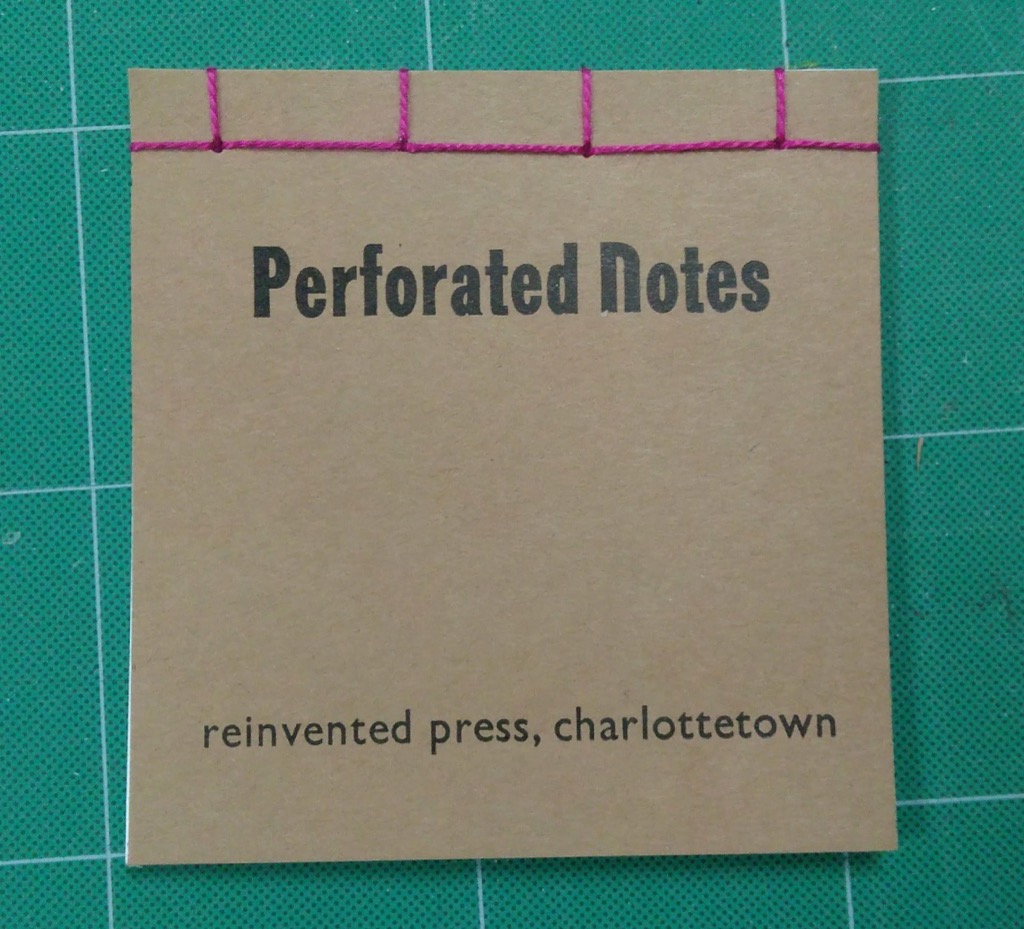
23 Notebooks Bound
I went through this same process 23 times, which was a very valuable process, as I got better at something every time through (i.e. not puncturing my fingers with the needle, or not tangling the thread, or figuring out how to keep the thread taught). Here’s what the final fleet of bound notebooks looks like:
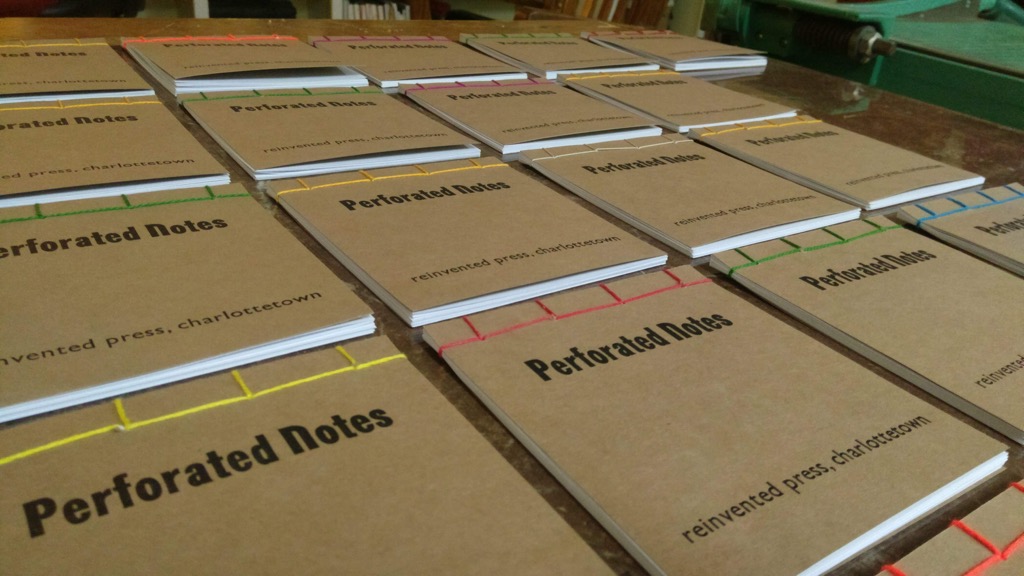
In documenting this I’ve come to realize how very, very difficult it is to write about a physical process–especially the sewing–in a way that does it justice and allows it to be repeated. I had the great gift of having taken Jennifer Brown’s bookbinding workshop twice, once in 2013 and again in 2017, and there was nothing like her patient explanations and demonstrations to get me to the point where I could do this myself. So, I apologize, both to you, gentle reader, and to my future self, for all my “and then just loop around and you’ll be done” vague brevity.
 I am
I am
Comments
These are beautiful and I
These are beautiful and I enjoyed reading about the process. I am increasingly challenged by threading needles, and have also availed myself of various gizmos to help. I recently watched a video on youtube (which I am unable to post here apparently) and mean to try it. It's called "How to Thread a Needle in Chinese Way."
They're lovely! Thanks so
They're lovely! Thanks so much for sharing.
Add new comment